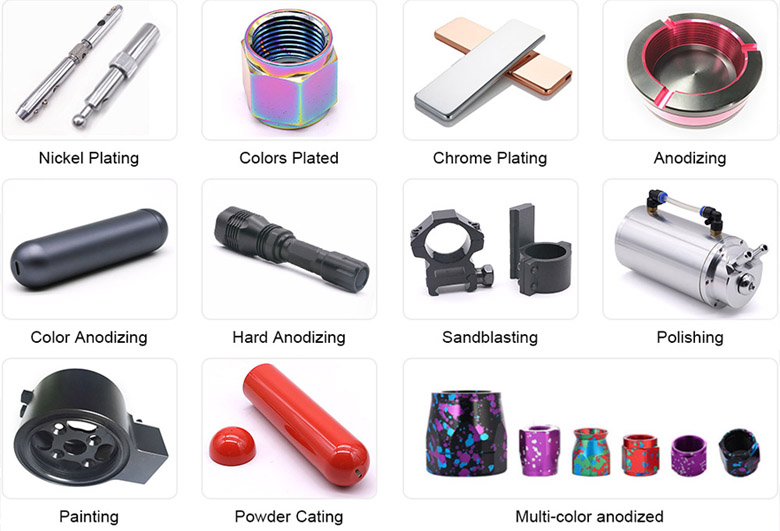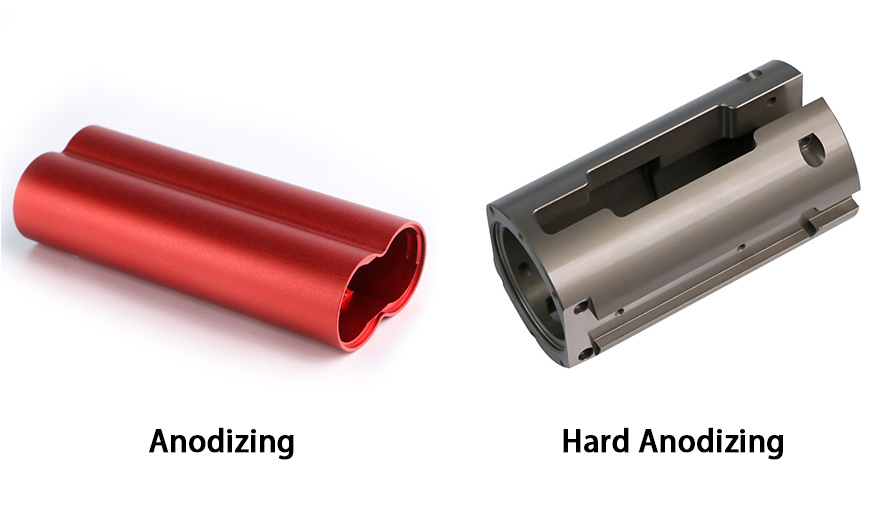15 years one-stop China custom CNC machining parts factory

Hey there I’m VMT Sam!
With 25 years of CNC machining experience we are committed to helping clients overcome 10000 complex part-processing challenges all to contribute to a better life through intelligent manufacturing. Contact us now
 121 |
Published by VMT at Jul 23 2022
121 |
Published by VMT at Jul 23 2022
Aluminum alloy material is the most used material in VMTCNC machining. In order to overcome the defects of surface hardness and wear resistance of aluminum precision CNC machining parts, expand the application range and prolong the service life of aluminum alloy parts, the surface treatment technology has become aluminum alloy CNC. An indispensable part of processing, and anodizing technology is widely used and mature. After anodizing the surface of aluminum precision CNC machining parts, its functionality and decoration can be enhanced. Anodizing can achieve any color except white, and can also achieve two-color anodizing by masking or removing part of the oxide layer.

What is the difference between ordinary oxidation and hard oxidation?
a. Applicable occasions are different: ordinary oxidation is suitable for decoration, while hard oxidation is mainly for function, and is generally used in wear-resistant and electric-resistant occasions. These are more performance comparisons that VMT usually uses, and there are many other differences, which cannot be further in-depth due to the limited level.
b. Film thickness: The general film thickness of hard oxide is >15μm, which is too low to meet the hardness requirements, while the thickness of ordinary oxide is relatively thin.
c. Current/voltage difference: ordinary oxidation current density is generally: 1-1.5A/dm2; and hard oxidation: 1.5-3A/dm2.
The above are the differences in operating conditions, and the differences in film performance are described below:
d. Surface condition: the ordinary oxidized surface is flat, while the hard oxidized surface is rough.
e. Different porosity: ordinary oxidation has high porosity, while hard oxidation has low porosity; generally, the outer circle of ordinary oxidation will become smaller, and the inner hole will become larger, while the hard oxidation will be the opposite.

Which industries is anodizing suitable for?
Non-ferrous metals or their alloys (such as aluminum, magnesium and their alloys) can be anodized. This method is widely used in photographic equipment parts, aircraft and auto parts, audio equipment parts, precision instruments and radio equipment, daily necessities and Building decoration, etc. Why do some customized aluminum precision CNC machining parts have color difference after anodization?
It is unavoidable that there is chromatic aberration in the precision CNC machining parts of alumina, and it is also a characteristic of anodized aluminum plate. However, each enterprise will regulate a color difference range, and the products within the range are normal products. The common causes of color difference are:
1) When the material is oxidized, the effect of the final product will be different due to the composition, content, concentration, temperature, treatment time and other factors affecting the treatment effect of the material;
2) In the closed coloring treatment of aluminum precision CNC machining parts, the color difference that already exists in the production of material pretreatment leads to increased difficulty in sample matching, color matching and color matching;
3) The metal element content and material texture of different batches of raw aluminum sheets cannot be consistent, and it is difficult to achieve exactly the same effect as the sample after multiple adjustments and sample evaluations during coloring processing.
Moreover, the coloring effect of each type of aluminum will be different, and the oxidation effect of 6061 is the best. Therefore, VMT reminds you that if there are special surface treatment requirements for aluminum precision CNC machining parts, the authenticity of the raw materials must be guaranteed.
Ready To Start Your Next Project?
Get Instant Quote

Request a Free Quote
Send us a message if you have any questions or request a quote. We will get back to you ASAP!